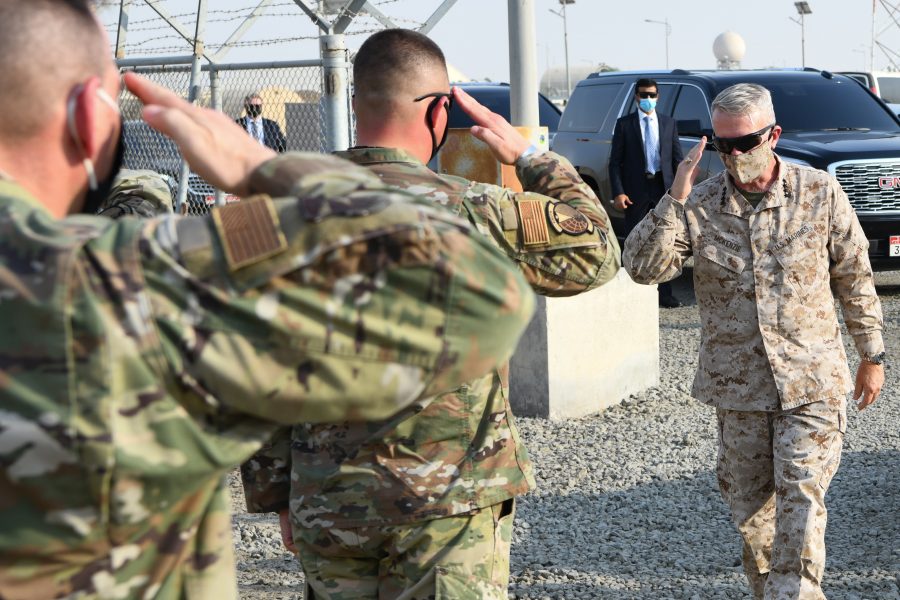Iraqi forces have shown their ability to maintain security, enabling the U.S. drawdown in the country despite increased attacks from Iranian proxies and an Islamic State group focused on rebuilding its caliphate, the head of U.S. forces in the region said Nov. 19.
“The progress of the Iraqi Security Forces has allowed the United States to reduce posture in Iraq,” U.S. Central Command boss Gen. Kenneth F. McKenzie Jr. said during a virtual event hosted by the National Council on U.S.-Arab Relations. “We have closed several bases and turned them over to Iraqi control. And we’re moving forward with the President’s decision to reduce our forces in Iraq to 2,500.”
Acting Defense Secretary Christopher C. Miller announced that plan, and the accompanying step of reducing U.S. forces in Afghanistan to the same level, by Jan. 15, 2021.
McKenzie said the U.S. military and diplomatic actions have largely “deterred” Iran within Iraq “because the regime now understands we possess both the capability and the will to respond,” following response to the ballistic missile attack and the American killing of Iranian Quds Force boss Qassem Soleimani in January.
At the same time, however, rocket and small arms attacks by Iranian proxies have “increased in scope and severity,” McKenzie said.
“Over the past year, Iranian-aligned proxies have conducted more than 50 rocket attacks on coalition bases, as well as our embassy in Baghdad, and more than 90 attacks on coalition logistics convoys,” he said. “In short, Iran is using Iraq as its proxy battleground against the United States, with Iran’s ultimate objective being to eject the United States and our forces from Iraq and the broader Middle East.”
Despite this pressure, Iraq has shown it wants to maintain its alliance with the U.S. and coalition as the fight against ISIS continues. Despite the planned reduction of 500 forces, 2,500 American troops will work with a similar number of coalition forces to help bolster Iraq’s capability to fight ISIS.
“While ISIS no longer controls territory, a recent estimate by the United Nations reported as many as 10,000 ISIS fighters still remain in Iraq and Syria, and they still have the capability to carry out attacks,” he said.
The group has “gone to ground” with the goal of maintaining a cyber presence, while also hoping to re-establish its physical “caliphate.” Military pressure in both Iraq and Syria is still needed, because attacks will likely continue in the form of an insurgency. Even the “brightest possible future will not be a bloodless future,” but the best end-state will be for local security forces to be able to contain ISIS without significant help, he said.
In the interim, U.S. and coalition support is still needed to keep ISIS down and prevent them from planning large attacks.
“What we want to focus on is preventing the organized, enabling, or detailed planning,” McKenzie said. “Because when you’re running for your life up and down the Euphrates River Valley, listening to the noise of an armed MQ-9 drone over head, it’s hard to think about conducting planning against Detroit.”
